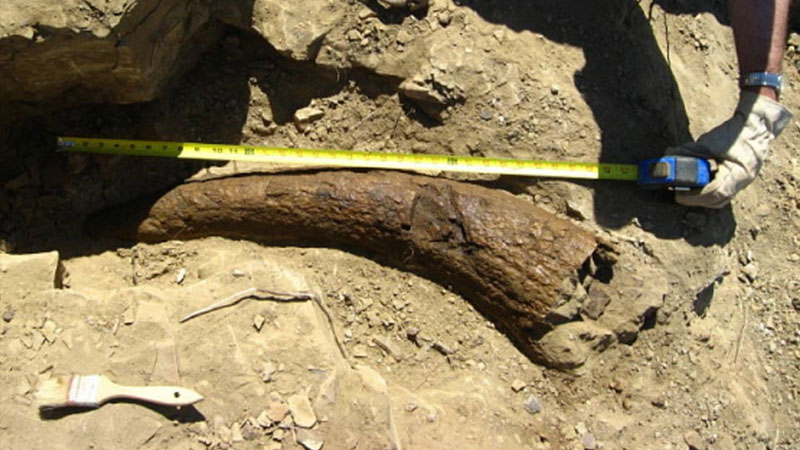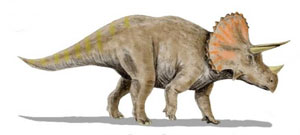
A Triceratops dinosaur horn discovered in Dawson County, Montana, has been dated to about 33,500 years ago and is challenging the view that dinosaurs disappeared about 65 million years ago.
The Triceratops forehead horn was excavated in May 2012 and sent to the Glendive Dinosaur and Fossil Museum, which has been cooperating since 2005 with the Paleochronology Group, a team of consultants in geology, paleontology, chemistry, engineering and education.
A sample of the dinosaur’s horn was sent to the Head of the Paleochronology Group Hugh Miller for carbon-14 dating.
Miller forwarded the sample to the Center for Applied Isotope Studies at the University of Georgia, which was divided in the laboratory into two fractions, one of which was dated to an age of 33,570 with a margin of error of 120 years and the other to an age of 41,010 with a margin of error of 220 years. The researcher said that it is always desirable to test multiple fractions to minimize the possibility of errors.
Triceratops, a name meaning “three-horned head,” is a genus of herbivorous dinosaur thought to have first appeared during the Cretaceous Period, about 68 million years ago, in what is now North America, and extinct during the Cretaceous-Paleogene Period, 66 million years ago.
However, scientists from the Paleochronology Group, who carry out research related to “science anomalies”, maintain that dinosaurs did not die out millions of years ago and that there is substantial evidence that they were still alive 23,000 years ago.

Until recently, carbon-14 dating was never used to test dinosaur bones, as the analysis is reliable up to 55,000 years old. Scientists never considered it valid to carry out the test, as dinosaurs are believed to have been extinct for 65 million years, based on radiometric dating of volcanic layers above or below the fossils, a method that the Paleochronology Group declares has “serious problems and gross assumptions”.
“It became clear years ago that paleontologists were not just neglecting to test dinosaur bones for C-14 content, but refusing to do so. Normally, a good scientist would be curious about the ages of important fossil bones,” Miller said.
The results of Triceratops horn analysis are not unique. According to Hugh Miller, numerous C-14 tests have already been performed on dinosaur bones, and surprisingly, they all returned results that only go back thousands rather than millions of years.

“I organized the Paleochronology Group in 2003 to fill a void regarding plant fossils and dinosaur bones, as I was curious to know how old they were with C-14 dating. Our model predicted that dinosaur bones would have a significant C-14, and indeed they span the 22,000-39,000-year range,” said Hugh Miller.
This finding goes against the dominant view of paleontologists and geologists, who claim that dinosaurs lived between 220 million and 65 million years ago, during the Mesozoic Era, and claims that Homo sapiens did not appear until about 200,000 years ago.
However, other independent researchers have pointed to ancient works of art, such as the carved “dinosaur” at Angkor Wat, and the Acámbaro figures, which appear to show humans riding dinosaurs, as perspective evidence.
Most agree that this work was done long before modern science gathered dinosaur fossils and conducted analyzes to produce detailed reconstructions of their appearance.
While there is a possibility that the C-14 test results were a result of contamination or error, although the results have been replicated and rigorous pre-treatments have been performed by the University of Georgia to control for this.
The failure to investigate or even acknowledge such significant findings, unfortunately, suggests that some scientists are more interested in maintaining current perspectives rather than seeking to advance knowledge and understanding in this field.




















